French television program Stade 2 ran an investigative piece by Thierry Vildary and Marco Bonarrigo last night (Sunday) detailing alleged mechanical doping within professional cycling races, among the claims was that they detected riders using motors during last months Strade Bianche and the Coppi e Bartali races by using a thermal imaging camera (heat gun).
The two videos are in French so I have done a translation then analysis of each one.
>>> Part 2 – Did the UCI get in the way of a Police Investigation
Stade 2 Mechanical Doping Video 1
Mechanical Doping in Cycling (1-2) from The Bike Lane on Vimeo.
The first video is almost 15 minutes long, the first four minutes and 30 seconds detail the use and alleged use of motors or mechanical doping within pro-cycling, the first example is the obvious one of Femke Van den Driessche earlier this year at the U23 cyclo-cross World Championships where a motor was actually found in one of her bikes. We are then shown a sequence of clips that have been debated ad nauseam over the previous years and they are Ryder Hesjedal at the 2014 Vuelta a Espana, Ion Izagirre from the Vuelta Valenciana earlier this year, Fabian Cancellara at the 2010 Tour of Flanders and the bike with no seat being taken off the Movistar team car and hidden during last years Vuelta a Espana. I won’t dwell on these as enough has been written about each already, and there is nothing new to add.
Davide Cassani is also interviewed and talks about Vivax / Gruber Assist type motors and some old footage from back in 2010 is repeated, Cassani talks in more detail about the Cancellara Tour of Flanders allegations.
At 4:30 we’re introduced to Alessandro Bartoli of BHOSS Bikes, BHOSS is a bike shop selling and fitting motors to bicycles. Bartoli demonstrates a Vivax seatpost type motor installation and how they can be hidden and we see a demonstration of the crankset powering the bike with no rider aboard. We then see a demonstration of a thermal imaging camera (heat gun) used on a rider while traveling along beside him in a car, you can clearly see the heat area in the pictures below and that the bike powers itself when the rider takes his feet off the pedals. (Fast forward to around 6:00 in the video).
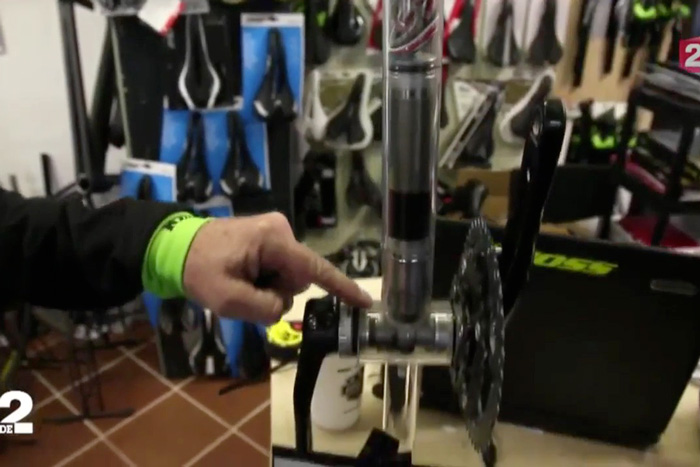
Again nothing new here other than the thermal imaging camera use, but it’s just recording what we already know exists in the Vivax type units and we already know they are powerful enough to propel a rider.
At 6:22 we start seeing scenes from the Tour de France and the footage is mostly concentrated on Chris Froome then Jean-Pierre Verdy (former Director AFLD) is interviewed and he details rumours about motors in bikes during the Tour de France but can’t give names.
Error, group does not exist! Check your syntax! (ID: 9)At 8:30 we start getting to the detail or what should lead to the detailed part of the investigation. The team set up on the side of the road with the thermal imaging camera and start pointing it at the riders bikes as they go past on a road that looks to have a gradual incline. It’s not apparent whether the team had access to the images straight away but the impression I get from the video is that they viewed the footage later.
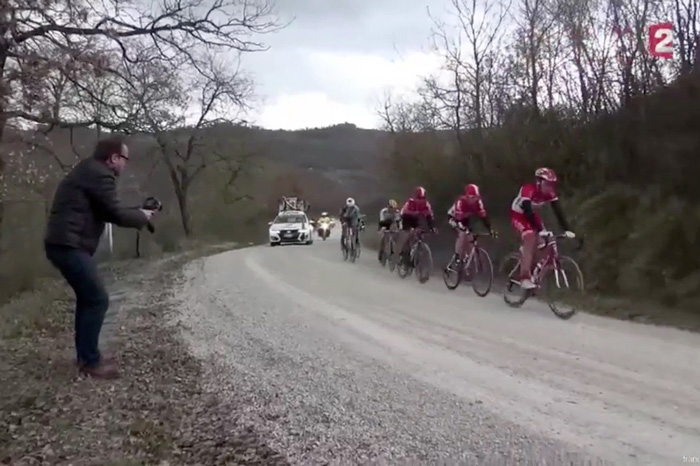
Let’s make one thing clear here because it’s an important point. The Corriere della Sera newspaper in Italy reported five instances of seatpost motors and two rear hub. But their story came from the same source, there were not separate investigations.
Taking the Stade 2 footage at it’s face value and that nothing has been left out for a later installment there is no evidence that any Vivax type seat tube motor and battery were used by any rider in the race, allegations by the Stade 2 mostly center on the rear hub from now on. Which kind of makes the first 8 and 1/2 minutes superfluous, to get to this point could have been prefaced more succinctly.
At 9:36 Thierry Vildary is in the office of Fabrice Kecili from FLIR (camera manufacturer) examining the footage and specifically the warmer area of the rear hub, the translation is rough but is something like “maybe we would find nothing or maybe it système a small motor set in the hub of the rear wheel and powered by lithium-ion batteries”.
We are then shown this illustration of what could be in the hub but it’s very simplistic and without detail.
And it’s worth viewing a picture of a typical road rear hub showing what is normally inside, they vary slightly from brand to brand but most will look something like this one.
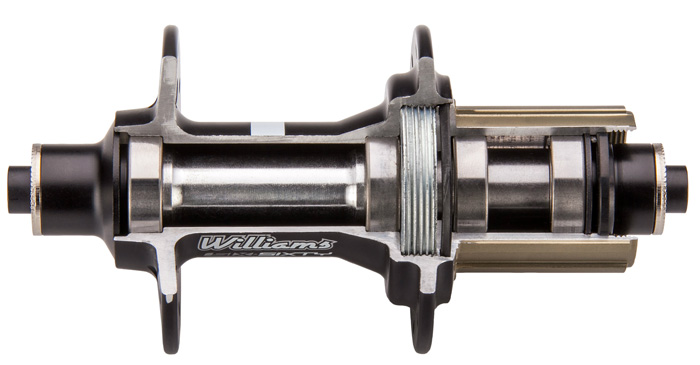
From 10:17 onwards we see footage of Gran Fondo riders, we see Thierry Vildary and Fabrice Kecili examining an image on screen where only what appears to be the bottom bracket bearings has a slight glow. The possibilities are either bearing friction or a very small motor similar to what is being alleged in the rear hub.
Brian Cookson is interviewed and shows some odd facial expressions while viewing the footage presented to him by Thierry Vildary and then from 12:00 onwards there is various innuendo from Cipolini and others about Contador in the 2015 Giro d’Italia.
Video 1 Summary
A lot of the 15 minutes is taken up by speculation about the past, technology we already know exists (Vivax), rumours about motor use in the Tour de France and then we get a look at what has driven this investigation and that is rear hub motors. Does video 2 deliver further evidence?
Stade 2 Mechanical Doping Video 2
Mechanical Doping in Cycling (2-2) from The Bike Lane on Vimeo.
Video 2 is 9 minutes long and opens from where video 1 left off with UCI scanning bikes at a race.
Thierry Vildary travels to Budapest to meet Stefano Varjas who has designed and invented motors for bikes. We get straight to the point and are shown this mini motor that can apparently output 30-40 watts but we are shown it in the context of a bottom bracket mounted drive, not a rear hub installation.
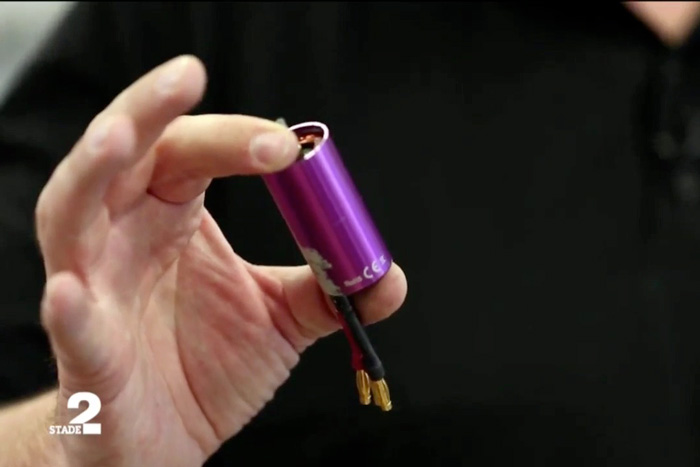
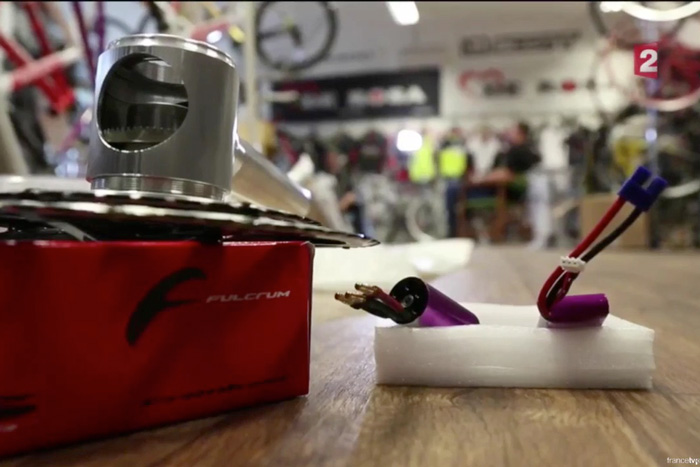
Between 2:30 and 4:23 are carbon rear wheel is shown that has cut outs where am electromagnetic installation could go, there aren’t any specific details other than some diagrams, theory and an estimated cost of 50,000 to 200,000 Euros. There are no magnets or parts of the system shown that would do the propulsion.
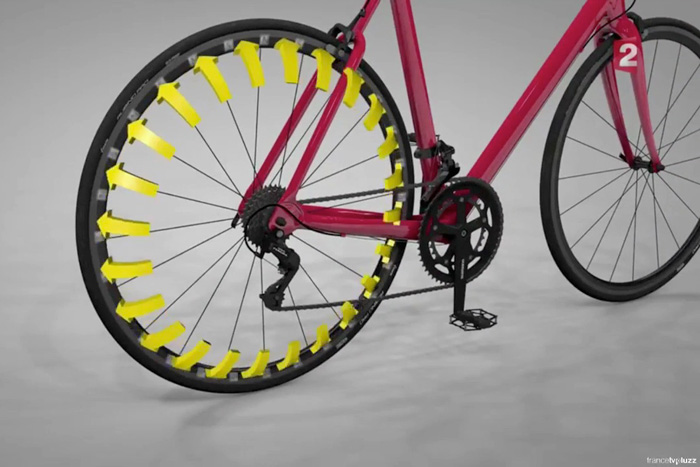
At 4:30 Thierry Vildary and Stefano Varjas watch the footage of the bottom bracket, Varjas appears to conclude the bottom bracket is normal bearing heat but then the rear hub footage is replayed and there are some odd looks from Varjas and appears to indicate he thinks there is a motor there. Translation is at 5:23.
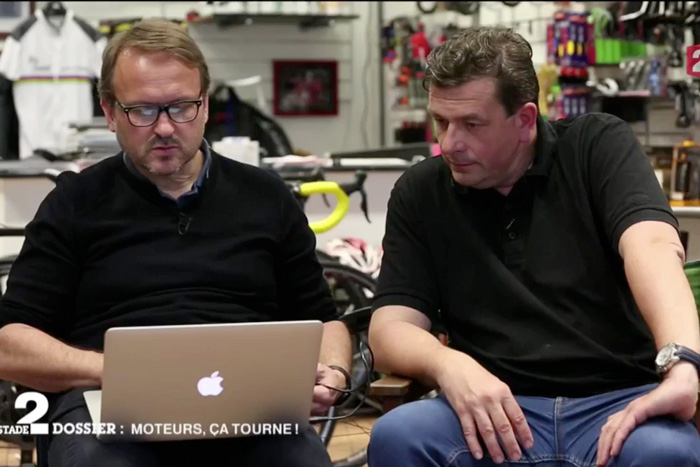
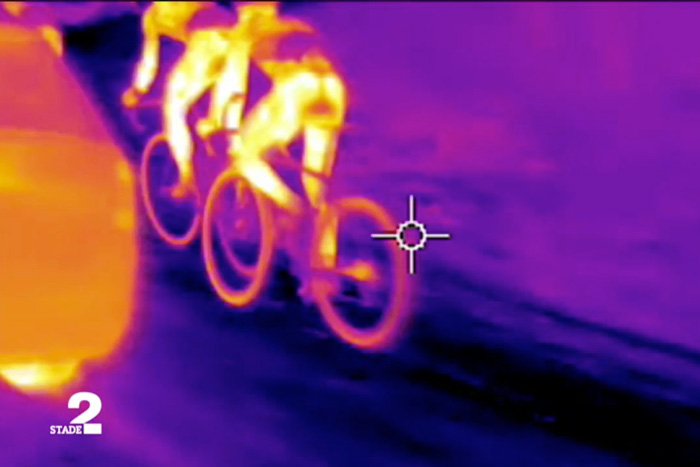
Then they cut back to studio where there is some more discussion.
Error, group does not exist! Check your syntax! (ID: 14)Summary of the Stade 2 Mechanical Doping Story
I don’t think Thierry Vildary has delivered on the new claims, physical evidence of a rear motor is not presented. The story continually diverts either to seatpost motors, electromagnetic motors, things are pictured that have no relevance to what appeared on the heat gun on the side of the road, that is the heat from the rear hub. All of the other items have been discussed and presented by others in the past although the thermal camera was a nice touch.
What was missing? They should have put a standard bike on an indoor trainer at 300 watts for 20-30 minutes and pointed the thermal camera at it for a comparison, the rear hub has four bearings and friction going on in there so it would be nice to see a reference point, same with the bottom bracket. They should also have attempted to build an example of what they were claiming, a motorized rear hub, we had all the inventors and experts there but none willing to attempt or show a working example. For me this was not investigated enough.
I was left wanting more information to make a conclusion, at this point you couldn’t rule out that motorized rear hubs are being used and similarly you couldn’t say they are.
It will be interesting to see if bike checks are increased at Wednesday’s La Flèche Wallonne and the response from the UCI.
Link to video translations here.
Update: Thermal cameras used at Liege-Bastogne-Liege
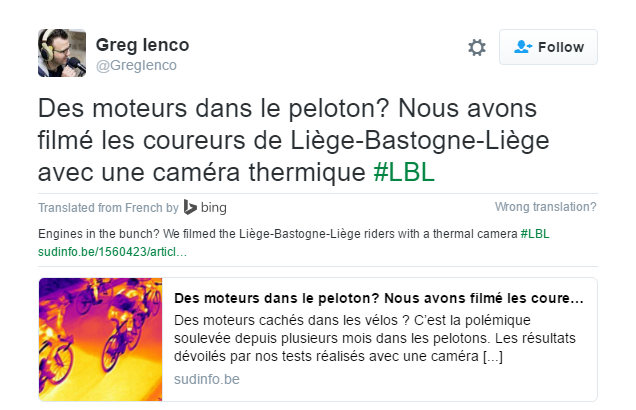
Following the footage and report from French television program Stade 2 Greg Lenco from sudinfo.be took a thermal imaging camera to last month’s Liege-Bastogne-Liege along with a specialist in infrared thermography, Esneutois Patrick Dress.
With the thermal imaging camera they used to would have been possible to detect thermal disturbances, a motor generating power, an additional heat and especially non-natural.
Nothing abnormal was observed “there is not the slightest suspicion as possible,” said Patrick Dress
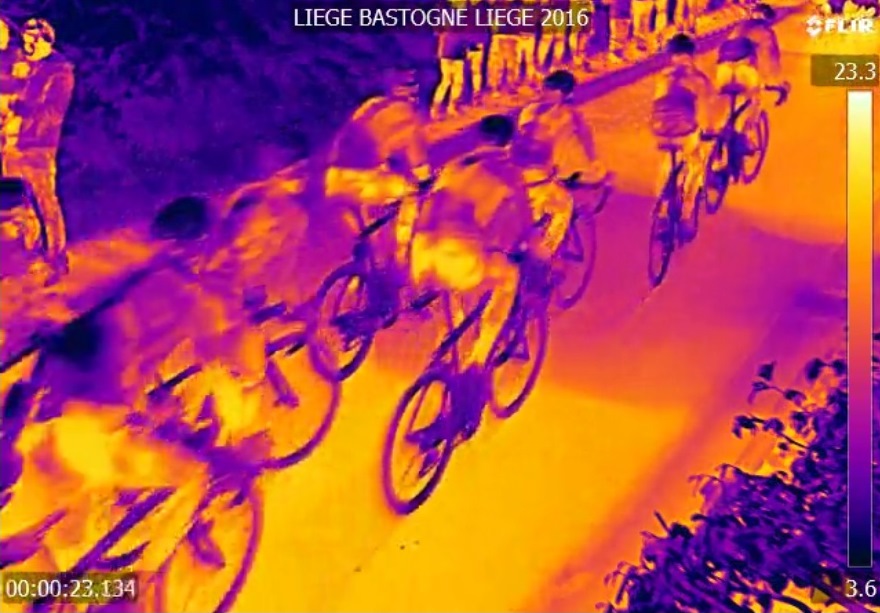

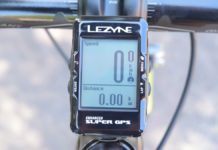

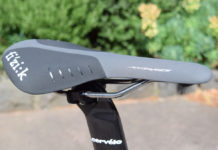
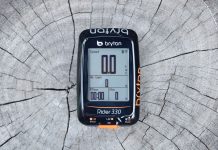




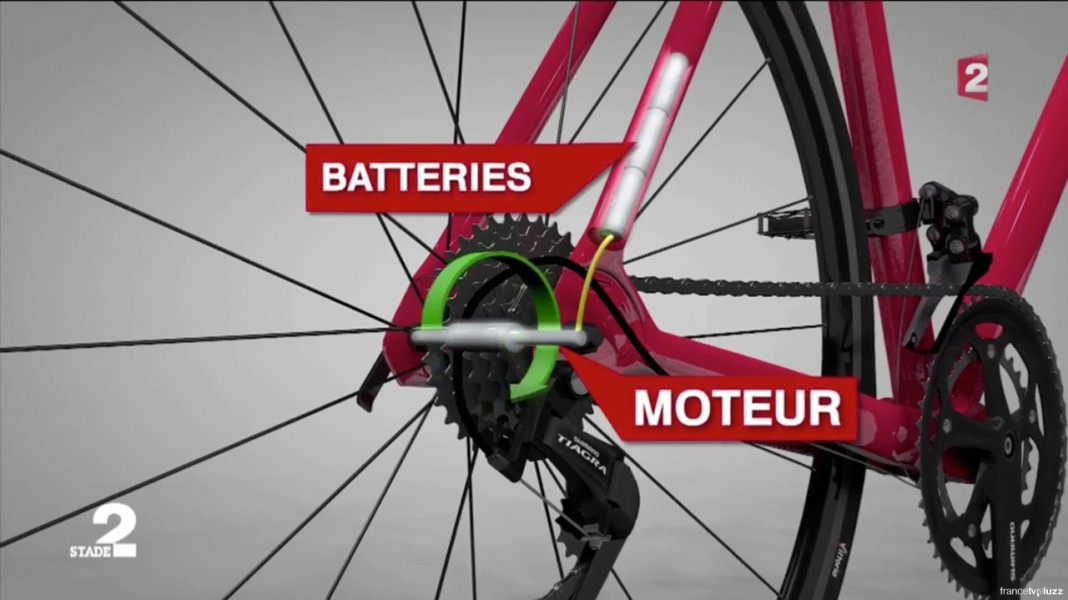
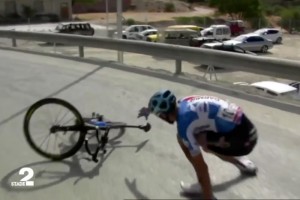

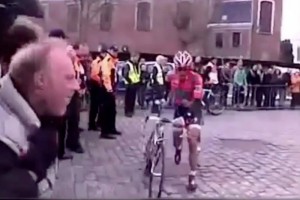
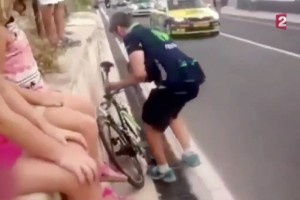
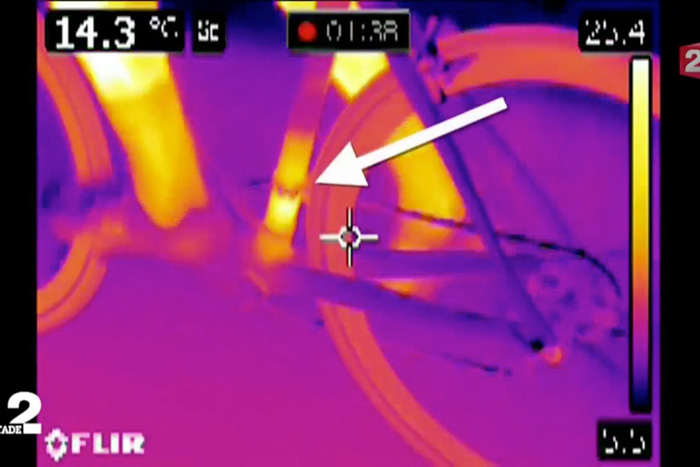
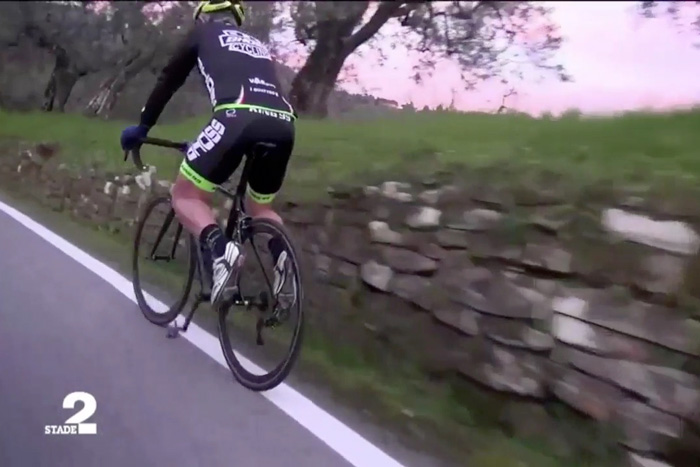
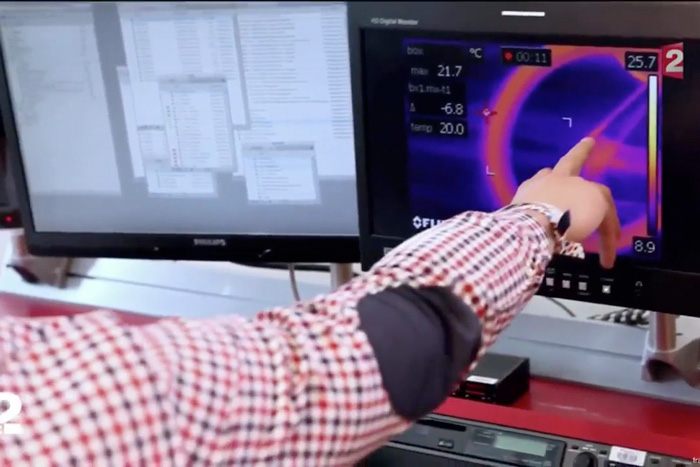
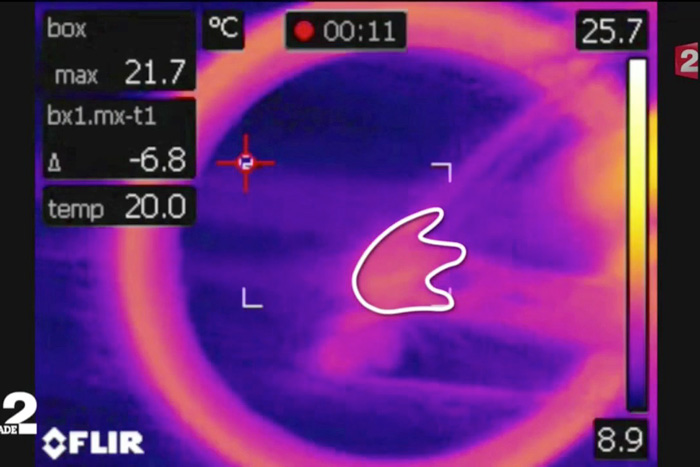
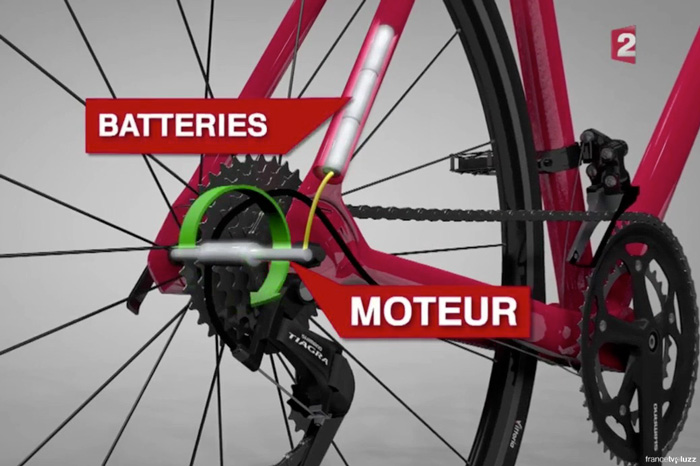


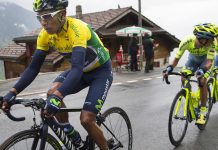


The program is like one big infomercial for the people who make these motors, still the look on cooksons face was priceless.